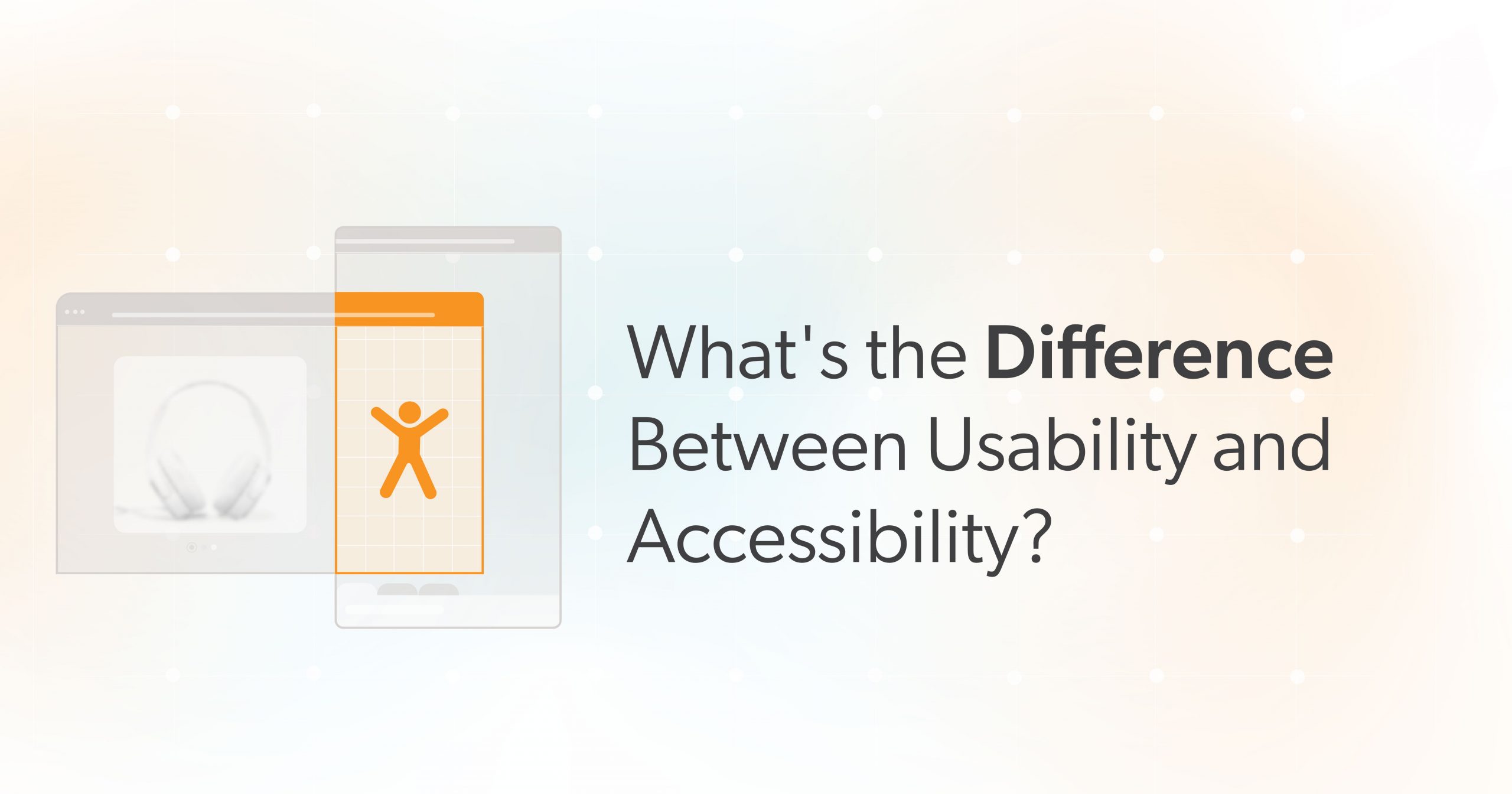Imagine surfing the internet and being unable to read the text due to size. Or not being able to enjoy video content because it has low volume and lacks closed captions. That’s where web usability and accessibility come into play. These two concepts might seem the same at first, but usable content isn’t always accessible. So, what exactly do these terms mean, and how do they affect your online experience?
In this post, we’ll explore the differences between web usability and accessibility and how they work together to create an optimal user experience. Let’s look at each concept in more detail.
Understanding Usability
Website usability helps us understand the user’s needs. It applies a user-centric design process to make sure that websites are efficient, easy to use, and satisfy users. In other words, a website should be easy to navigate, have a clear layout, and include a responsive design.
For example, a website with excellent usability will make it simple for users to find information, complete tasks, and engage with the site’s content.
Some key principles of web usability include:
- Ease of learning: How easily can users accomplish basic tasks when encountering a website for the first time?
- Efficiency: Once users have learned the workings of a website, how quickly can they perform tasks?
- Recognition: When previous users return to a website, how easily can they remember what and how to do something?
- Errors: How often do users make errors, and how easily can they recover from them?
- Satisfaction: How pleasant is the website in terms of design and layout?
While usability is based on user experience, it doesn’t focus on users with disabilities. Web accessibility, on the other hand, does.
What is Web Accessibility?
Web accessibility is the practice of making websites usable by people with disabilities. It aims to remove barriers preventing these users from accessing, navigating, and interacting with the content. Allowing them to perceive, understand, navigate, and interact with websites and tools equally.
Some key principles of web accessibility include:
- Providing all non-text content (images, form fields, video, audio, etc.) with a text alternative that serves the equivalent purpose
- Making sure everything on the website can be done through keyboard navigation
- Using webpage titles that describe each page’s topic or purpose.
- Ensure the site’s navigational elements are consistent and predictable across every page.
- Allowing users with visual impairments to adjust the text size and contrast on a website.
Web Accessibility is a Part of Usability
While web accessibility focuses on ensuring that people with disabilities can use websites, web usability is about making a website easy to use for everyone. Although these concepts have different goals, they do share some similarities. For instance, both require clear navigation, readable text, and a logical structure.
However, it’s important to remember that a usable site and an accessible site are not always the same, and vice versa. For example, a website can be usable if it works well for everyone. Still, it could be inaccessible if it creates barriers for those with disabilities. On the other hand, a website can be accessible but not usable if it is designed for people with disabilities but lacks user-friendly features.
The goal is to create a website or tool that is both web accessible and usable, benefiting the widest range of users possible.
Web Accessible Design
There are guidelines and techniques for web accessibility. The Web Content Accessibility Guidelines (WCAG) is a set of recommendations created by the World Wide Web Consortium (W3C) to ensure web accessibility. These guidelines are organized under four main principles: perceivable, operable, understandable, and robust (POUR).
However, designers, developers, and business owners often only approach web accessibility as a checklist of standards to meet. As a result, the user’s interaction is often lost, and accessibility is not achieved.
Only by combining the accessibility standards and usability process can we make sure a website is technically and functionally usable by people with disabilities. This process is often referred to as usable accessibility or accessible user experience.
Testing for Web Accessibility and Usability
Testing is an essential step in making sure that your website is accessible and usable. For web accessibility, you can use automated testing tools like Lighthouse, WAVE, and Firefox Inspector. Automated audits scan your website for accessibility barriers, such as missing alt text, improper header structures, and broken links. These tools provide quick insights into potential problems, such as missing alt text, improper heading structures, and broken links. However, automated testing is not enough.
For web usability, it’s helpful to conduct a manual audit. Manual reviews are more thorough, providing a more accurate assessment of how people with disabilities experience and engage your website. A web accessibility expert assesses your website using tools and human judgment. This includes screen readers, keyboard navigation, and magnifiers.
Web Accessibility and Usability
Web accessibility and web usability are two different yet interconnected concepts that help create a better online experience for all users. By understanding and implementing both, you can create a website that is inclusive, user-friendly, and compliant with accessibility standards.
As you become aware of the importance of web accessibility and its impact on your users, it is important to know you are not alone. 216digital is here to help regardless of where you are in your web accessibility journey. Schedule a complementary ADA Strategy Briefing today to find out how we can help.

